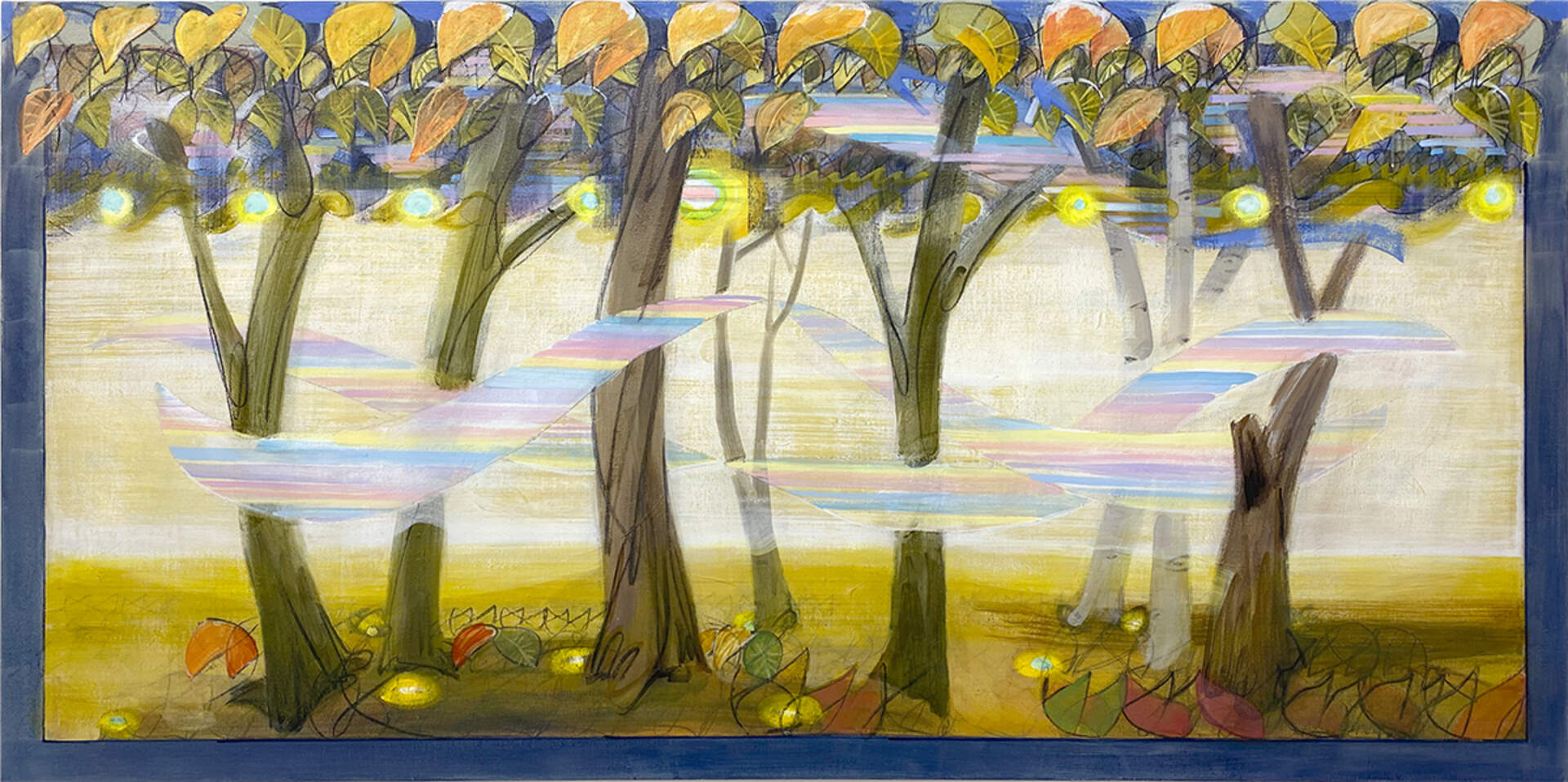Mike Glier (b. 1953)Frost Settling
2023
acrylic and charcoal on linen
36 x 72 inches
Courtesy Krakow Witkin Gallery, Boston
THE ASAHI ILLUSION
MG: Charles Burchfield swallowed the sun it seems, since many of his paintings glow from within. Although the effect is otherworldly, the experience is entirely biological and rooted in our brains. When fumbling around with paint, I noticed that white will glow when surrounded by a light, saturated yellow. This seemingly supernatural effect is heightened when the yellow, itself, is surrounded by dark hues. The yellow brings out the blue notes in the white creating a complementary contrast and the surrounding dark hues accentuate this effect through a contrast of value, which Joseph Albers illuminated in The Interaction of Color. There is, however, more to this illusion than Albers can account for. The New York Times recently published a report, “This Optical Illusion has a Revelation about Your Brain and Eyes,” by Richard Sima, about how the brain anticipates situations in which your pupils constrict, such as looking at the sun through a filter of leaves. (This effect is known as the Asahi illusion.) Notice how bright the sun seems to be in Afternoon in the Grove; brighter than other white areas, even though they are actually the same white. By emulating the light on a woodland walk, Burchfield takes advantage of our brain's tendency to make assumptions on what it is seeing based on past experiences; our pupils constrict in anticipation of bright light and therefore we experience bright light even though nothing in the real world has changed. Burchfield did not know of the Asahi illusion, but he knew how to use it to create an experience of illumination with all the philosophical and spiritual notions attached.
NW: I’m sure you’re correct that Burchfield would not have known the term “Asahi illusion,” but he certainly tried to represent the sun’s brilliance and the moon’s glow in his paintings. In Afternoon in the Grove, a pulsing sun pierces dense, black treetops. Rings of yellow, red, gold, and green create a strobing effect. Near the ground, a narrow line of golden sunlight shimmers through a rhythmic pattern of slender tree trunks to enhance the effect with a cinematic flicker of movement. Having broken through the lacy treetops, the sun catches the outermost leaves of a maple in the foreground. Our eyes dart back and forth through the triangular highlights, further animating the scene. Turning to your painting I notice it also engages the Asahi illusion in flickers of frosty light. How did you conceive of frost as such intertwined, prismatic ribbons?
MW: Frost is water vapor that transforms directly into ice, skipping the liquid stage. As the vapor comes in contact with cold surfaces, it leaves fabulous crystal patterns on grass and ground. “Fabulous” is a funny adjective to use, since it often describes extravagant luxury like a Fabergé egg, but frost colors and forms are easily the equivalent of a decorated egg! This process is called deposition, or “frost settling” in the vernacular. So, I made an image of prismatic bands of chilly layers of air drifting to the ground, sparking light as they settle.
NW: Burchfield also tried to depict snow as “Winter Diamonds”—a fantasy-land vision when bright sunlight on a very still morning sets a snowy landscape into a treasure trove of billions of sparkles. His iridescent icicles by the entrance to a dark cave in Retreat of Winter glint with tiny spots of green.
MG: Few of us have lots of diamonds and jeweled eggs, but anyone can enjoy frost! Burchfield is wonderful at challenging materialistic values, insisting that common natural events are the most extraordinary.
NW: Indeed, in 1962 he declared: “There is nothing commonplace in the world of nature — The shadow cast by a weed on the ground is as elemental and wondrous as the most violent thunderstorm.”
